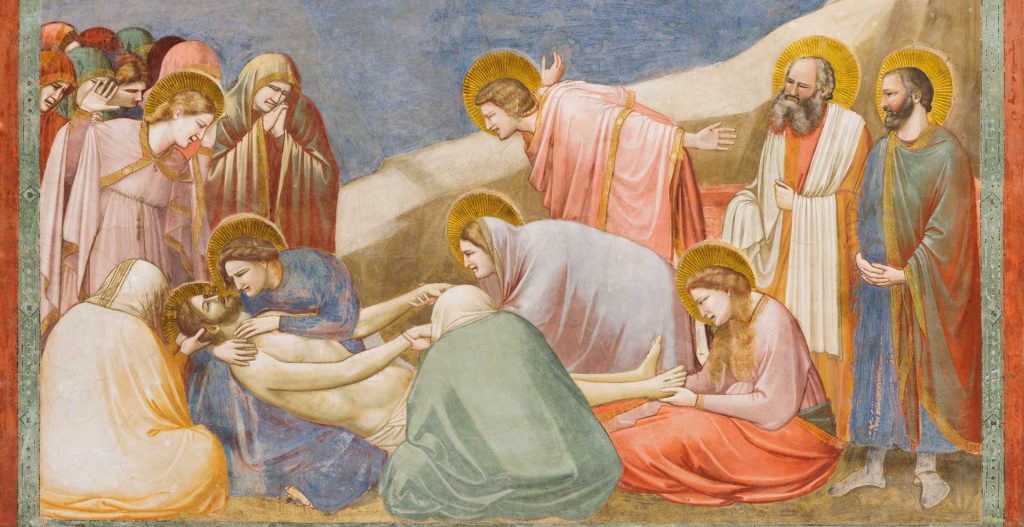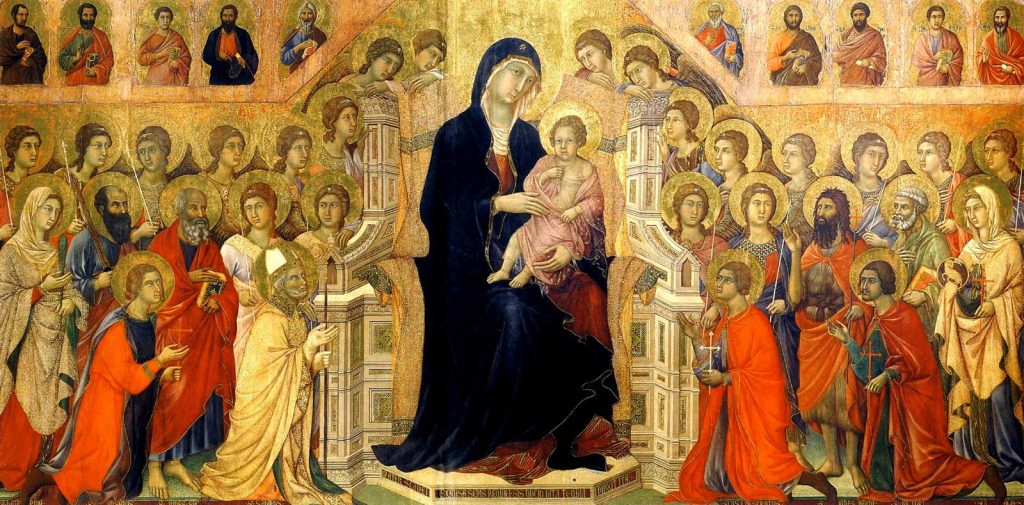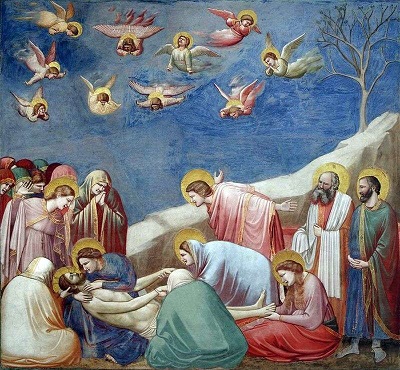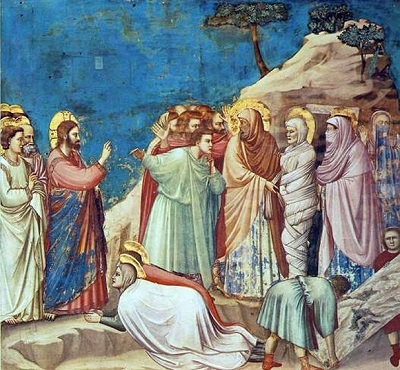
This is the final chapter on medieval music. Before moving on to the Renaissance, let’s explore the Italian Trecento. The 14th century in Italy, known as the “Trecento,” ran alongside the French Ars Nova. Both mark the closing phase of the Middle Ages, just before the Renaissance era.

Giotto di Bondone is a key figure in art history, often regarded as the painter who initiated the Renaissance. To better understand the music of the Trecento, we can examine some of Giotto’s works. For instance, consider the altarpiece by his contemporary and teacher, Duccio di Buoninsegna (Maestà, 1308). It retains a distinctly medieval style, where saints appear distant and otherworldly. In contrast, Giotto’s fresco, Lamentation (1305), portrays the saints as much more human and relatable, with realistic backgrounds placing them in earthly settings rather than heavenly realms. The clothing and facial expressions also appear more natural. By comparing these two works, it’s clear that the medieval perspective was transitioning to a more humanistic approach, emphasizing genuine human emotions and experiences.


Literature
Dante (1265 – 1321) & Petrarca (Petrarch 1304 – 1374)
Trecento is famous for its literature, with works like Dante’s Divine Comedy and Petrarch’s lyric poems remaining timeless classics. Dante delves into the relationship between humanity and religion, while Petrarch focuses on the theme of love. Both authors even inspired Romantic composers like Franz Liszt.
The term “trecento” in music refers to the musical developments of 14th-century Italy. This period saw significant innovations in secular music, particularly in Italian vernacular songs (vernacular=mother tongue). Secular music dominated the Trecento era, with lyrics often focusing on themes like love, nature, society, and politics.
Like the Ars Nova in France with its Formes fixes, Italy also has three types of songs that are very common.
- Balata: The Trecento ballata was one of the most prominent secular musical forms in 14th-century Italy. Its name comes from the Italian verb ballare, “to dance,” indicating its origin as a song for dancing. Ballate were performed with a single voice or by two or three voices. Over time, the form evolved, with more complex polyphonic settings appearing. Ballate were often set to lyrical, vernacular poetry. The texts frequently explored themes of courtly love, nature, and storytelling.
The ballata has a distinct structure, most similar to the French virelai It follows the form AbbaA. - Caccia: The word “caccia” literally means “hunt,” and this genre is a musical representation of that theme. The most defining feature of the caccia is its canonic, or imitative, structure. Typically, it was written for two voices that “chase” each other, singing the same melody but starting at different times. This creates a musical echo or a sense of pursuit, perfectly embodying the idea of a hunt. The texts are highly descriptive and often feature scenes of hunting, fishing, or other outdoor activities. They are full of vivid sound effects. To heighten the realism, the composers used onomatopoeia: musical imitations of sounds like the barking of dogs, the cries of hunters, and the blowing of horns.
- Madrigal: A type of secular music that originated in northern Italy in the 14th century. The songs are sung for two or three voices and cover a variety of topics. The texts of Trecento madrigals were typically pastoral, amorous, or satirical, reflecting the secular nature of the genre. They often contained descriptions of nature, love, and life.
The Trecento madrigal is a distinct musical form from the 14th century, and it’s important not to confuse it with the more famous Renaissance madrigal that emerged later. While they share a name, they are stylistically very different. The Trecento madrigal was based on a poetic structure “aaB”. This is a key difference from the later Renaissance madrigal, which was typically “through-composed,” meaning new music for every line of text.
Francesco Landini (c. 1325-1397)
Francesco Landini was a prominent Italian composer and musician of the 14th century, born in Fiesole near Florence. Despite losing his sight to smallpox in childhood, he received a comprehensive education and excelled in music, becoming an accomplished organist and performer on various instruments.
He composed around 150 works and served as the organist at the Basilica of San Lorenzo in Florence. While his style was influenced by Ars Nova, he developed a distinctively Italian approach, emphasizing the expressive power of words.
Balata: Landini – Ecco la primavera (Spring has come)
an other version of Landini’s Ecco la primavera: https://www.youtube.com/watch?v=tXPI8JfQBc4
Caccia: Florentine Lorenzo da Firenze – A poste messe
Madrigal: Landini – Musica Son- Già Furon- Ciascun Vuol
Madrigal by Firenze , 2:53 Caccia by Firenze , 5:40 Balata by Landini
